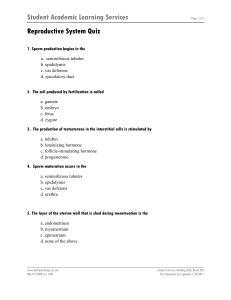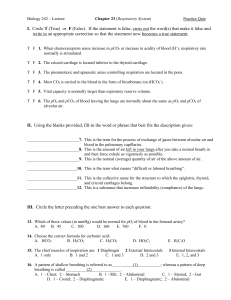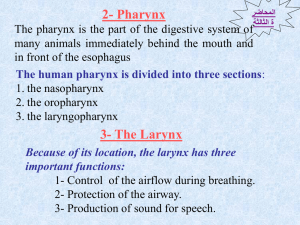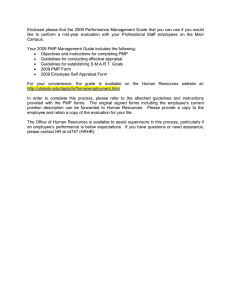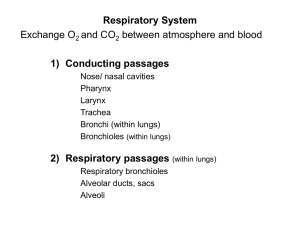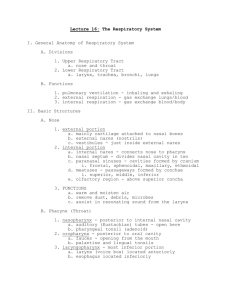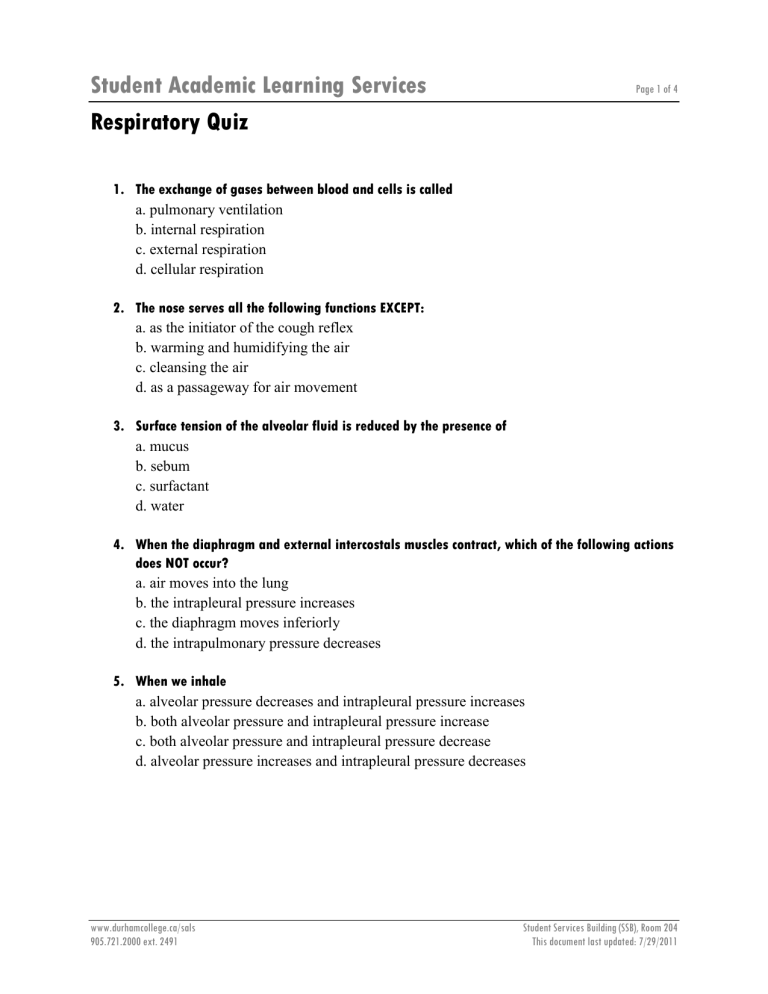
Student Academic Learning Services Respiratory Quiz Page 1 of 4 1. The exchange of gases between blood and cells is called a. pulmonary ventilation b. internal respiration c. external respiration d. cellular respiration 2. The nose serves all the following functions EXCEPT: a. as the initiator of the cough reflex b. warming and humidifying the air c. cleansing the air d. as a passageway for air movement 3. Surface tension of the alveolar fluid is reduced by the presence of a. mucus b. sebum c. surfactant d. water 4. When the diaphragm and external intercostals muscles contract, which of the following actions does NOT occur? a. air moves into the lung b. the intrapleural pressure increases c. the diaphragm moves inferiorly d. the intrapulmonary pressure decreases 5. When we inhale a. alveolar pressure decreases and intrapleural pressure increases b. both alveolar pressure and intrapleural pressure increase c. both alveolar pressure and intrapleural pressure decrease d. alveolar pressure increases and intrapleural pressure decreases www.durhamcollege.ca/sals 905.721.2000 ext. 2491 Student Services Building (SSB), Room 204 This document last updated: 7/29/2011 Student Academic Learning Services Page 2 of 4 6. Which of the body systems listed below cooperate to supply O2 to cells and eliminate CO2? 1) digestive system 2) cardiovascular system 3) urinary system 4) respiratory system 5) endocrine system a. 3, 5 b. 2, 4 c. 1, 2 d. 1, 2, 4 7. In the lungs a. PCO2 in the alveoli is the same as that in the capillaries b. PO2 in the alveoli is the same as that in the capillaries c. PCO2 in the alveoli is higher than that in the capillaries d. PCO2 in the alveoli is lower than that in the capillaries 8. As blood enters the systemic capillaries a. PO2 in the blood is the same as PCO2 in the tissues b. PO2 in the blood is higher than that in the tissues c. PO2 in the blood is lower than that in the tissues d. PO2 in the blood is the same as that in the tissues 9. During swallowing, the glottis is covered by a. false vocal cord b. true vocal cord c. epiglottis d. Adam’s apple 10. Which of the following describes a correct order of structures in the respiratory passageways? a. pharynx, trachea, larynx, bronchi, bronchioles b. larynx, pharynx, trachea, bronchioles, bronchi c. trachea, pharynx, larynx, bronchi, bronchioles d. pharynx, larynx, trachea, bronchi, bronchioles www.durhamcollege.ca/sals 905.721.2000 ext. 2491 Student Services Building (SSB), Room 204 This document last updated: 7/29/2011 Student Academic Learning Services Page 3 of 4 11. The volume of air that can be exhaled after normal exhalation is the a. tidal volume b. residual volume c. inspiratory reserve volume d. expiratory reserve volume 12. The primary chemical stimulus for breathing is the concentration of a. carbon monoxide in the blood b. carbon dioxide in the blood c. oxygen in the blood d. carbonic acid in the blood 13. During internal and external respiration, gases move by a. osmosis b. active transport c. diffusion d. endocytosis 14. Most oxygen in the blood is transported a. as gas dissolved in plasma b. as oxyhemoglobin c. as carboxyhemoglobin d. as bicarbonate www.durhamcollege.ca/sals 905.721.2000 ext. 2491 Student Services Building (SSB), Room 204 This document last updated: 7/29/2011 Student Academic Learning Services Page 4 of 4 Answers 1. b 2. a 3. c 4. b 5. c 6. b 7. d 8. b 9. c 10. d 11. d 12. b 13. c 14. b www.durhamcollege.ca/sals 905.721.2000 ext. 2491 Student Services Building (SSB), Room 204 This document last updated: 7/29/2011
